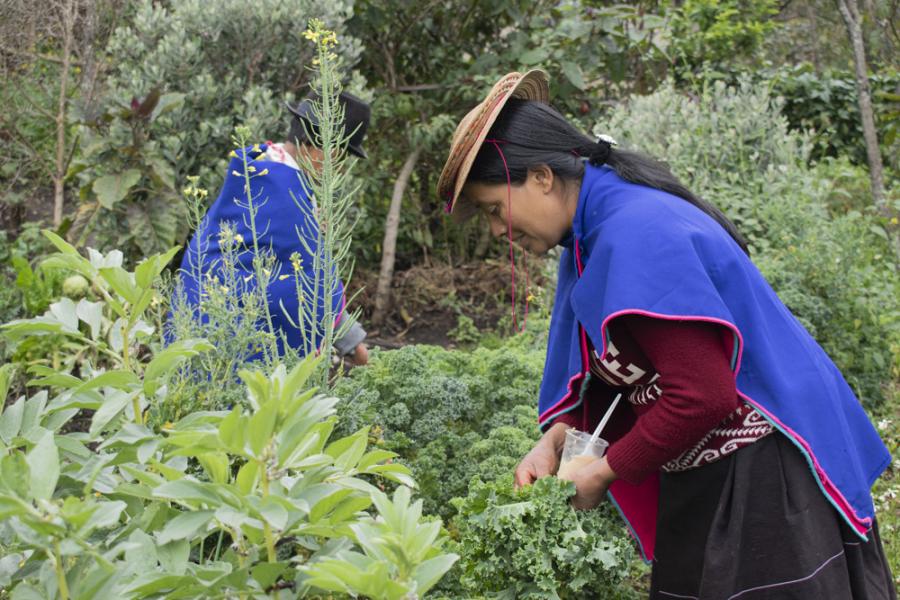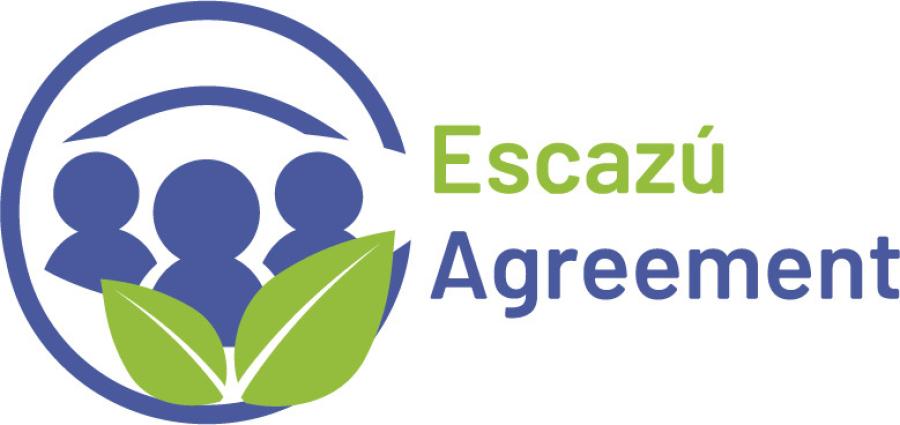
By Jenna Winton
An opening song by Blackfeet Cherokee performing artist Maria Gladstone kicked off the The Indigenous New Media Symposium sponsored by the School of Media Studies hosted at the New School in New York City on February 21, 2014. The event brought together prominent Native American and First Nations media makers and creative activists to discuss how new media is being used in Indigenous communities to educate, organize, entertain, and advocate. The panel addressed topics such as confronting the ongoing Native stereotypes in mainstream media, the resurgence of Indigenous ways through new media, and discussed how this new outspoken generation is using their artistic endeavors for cultural, economical, and political change.
Panelist included: Dr. Jessica R. Metcalfe (Turtle Mountain Chippewa), founder of the Beyond Buckskin Boutique who wrote her doctoral dissertation on Native designers of high fashion; Adrienne Keene (Cherokee Nation of Oklahoma), an EdD candidate at Harvard’s Graduate School of Education and founder of Native Appropriations –a blog dedicated to pushing back against stereotypes and misrepresentations of Native peoples; Chase Iron Eyes (Standing Rock Sioux), Tribal Judge, Lakota Peoples Law Project Staff Attorney and founder of Last Real Indians, a media resource for original Indigenous content; and Jarrett Martineau (Cree/Dene), a Ph.D. Candidate in Indigenous Governance at the University of Victoria and co-founder and Creative Producer of Revolutions Per Minute (RPM.fm), a global new music platform to promote Indigenous music culture, he runs the Decolonizing Media blog and is an organizer with the Indigenous Nationhood Movement (NationsRising.org); and Clayton Thomas-Muller (Mathias Colomb Cree “Pukatawagan” Nation in Northern Manitoba, Canada), organizer for the Defenders of the Land & Idle No More and the co-director of the Indigenous Tar Sands (ITS) Campaign of the Polaris Institute.
New media has changed the way we relate to each other and the way the community relays information as activists by being able to communicate across vast geographical differences. Indigenous youth “navigate exceedingly difficult complex, social, economical, and political realities but new media allows for all to participate in the change,” said Dhillon, the assistant professor of global studies and anthropology at the New School.
Outspoken activist Adrienne Keene stood at the podium to present first. Keene’s blog Native Appropriations calls out stereotypes still rampant in our society and addresses the need for the accurate portrayal of the contemporary Native person in media. She set the stage for the discussion of representation by sharing slides of the Urban Outfitters Navajo line, the “Sexy Native American Indian” costume, Indian mascots, “Fire Water” Whiskey, the hipster tribal/headdress trend, and a box of fireworks called “Trail of Tears.” “These were the things that I saw in my everyday life, these were the things that were really problematic to me, these were things that inspired my blog and things that I write about today. These images are everywhere and they cross every realm of pop culture, of media, of things that are just in our face constantly,” she says. “I realized the reason my classmates thought that Indians didn’t exist and couldn’t understand that I was a Native person… was these were the only types of images they ever saw of Native people.”
Keene’s blog grew from a webpage used to catalog offensive images to a community of over 40,000 participants who share her passion for ending the misrepresentation of Indigenous people in the media. “It’s grown into this really robust community online. This community has become really amazing too... When you have all these people who are interested in issues of representation…then when something happens, we can mobilize that support and things happen and change happens and it’s really exciting.”
Keene gave examples of how by uniting and acting through new media, communities can influence the representations presented in the media. Outcries from social media over problematic images like No Doubt’s “Looking Hot” video, Victoria’s Secret’s use of a headdress on a runway, and racist fast food signs led to the quick removal of these images. Keene discussed the need to have positive representations to replace the stereotypes with and shared the work of 1491’s Represent Campaign and Matika Wilbur’s Project 562 as first-rate examples.
On her blog, Keene reached out to her followers and asked them why they think pushing back on stereotypes is important and what their work affects. From the responses, she came up with three themes: creating a global community of Indigenous activist and allies, creating vocabulary, resources, and support to speak out, and creating challenges to deeper issues of white privilege, colonialism, and power.“These images offer an entry point to those conversations. And it’s been such a learning experience even to say ‘Yeah that image is problematic not just because it’s a stereotypical representation of my people, but because that is a vestige of colonialism. And we need to move past that.’”
Jessica Metcalfe spoke next. Her website Beyond Buckskin started as a blog spotlighting Native American designers and fashions. The blog evolved into a website with Native designer profiles and artist interviews displaying the diversity of Native American fashion designers. The website also showcases historical traditional clothes with stories of their own to tell.
Metcalfe also critiques the appropriation of the Native imagery she sees in the fashion world. She criticized Oprah for “cooing over Ralph Lauren, praising him, calling him the epitome of the American dream. This is very problematic because Ralph Lauren has built his empire off of selling the Native. The problem with that is if you think about him as the best example of the American Dream. It excludes us from that story. It actually turns us into objects that can be sold, commodified, consumed”.
In response to her reader’s inquiries of where they could buy actual Native-made clothing and accessories, Jessica created the first online platform for Indigenous designers; she founded Beyond Buckskin Boutique in 2009. Metcalfe mentioned how Indigenous designers like Bethany Yellowtail incorporate images and elements from their ancestral heritage into their work. “We’re looking at ideas of authenticity without buying into stereotypes.”
Metcalfe also spoke of ancient artistic practices that predate contact, like quillwork, that are being used by Native designers and the positive effect consumers could make by buying from these artisans. “When you purchase something like a pair of porcupine quillwork earrings you are supporting the continuance of those traditional artistic practices.”
Concluding her presentation she stated that the challenges of stereotypes, cheap-knock offs, and industry constraints are being countered in the fashion world by successes in recognition, collaborations and more events. “By being able to create a blog I was able to reach a broader international audience. And I was able to educate about the history of Native American adornment practices, share the stories and experiences of contemporary Indigenous designers, and to critique and discuss Native appropriations in the fashion industry. I was also able to create and provide a space for people of all backgrounds to easily access and purchase Native made items. When Beyond Buckskin launched in 2009 there was no one critiquing Native American stereotypes in fashion…When Adrienne launched Native American Appropriations, I was relieved because I wasn’t alone. I could become more vocal.”
Standing next to the title of his presentation “Indigenous Media, Remix, and Revolution,” panelist Jarrett Martineau opened with his excitement about the event. “The fact that we’re having an event like this, that I think a few years ago we couldn’t have been able to have. There’s a particular time that we’re in that’s about a real reemergence, a real resurgence of our people that’s producing all of this new media, this new artistry, this new culture, which is amazing.”
Martineau’s presentation put an emphasis on new media’s influence in political engagement and the four essential elements of community, strength, representation, and control that he sees across the variety of platforms Indigenous media activist are working in. “This is what I think a lot of Indigenous media is seeking to do, it’s about building community, it’s about really exerting our strength it’s about taking charge of representation which flows into different forms of control. “
These elements inspired Martineau’s website RPM.fm (Revolutions Per Minute), launched in 2011 as a platform to showcase the wide array of Indigenous music from all over the world. The site’s huge database of artists crushes stereotypes and crosses all genres. Martineau said the tag line for the site, “Indigenous Music Culture” is not only referencing Indigenous music and Indigenous culture, but it also represents the emergence of a new vein of Indigenous culture created through music. “It’s this culture of us all making and creating together.” Martineau continues, “On the one hand it’s an inward facing work that’s about cultivating that relationship with one another, recognizing one another, and celebrating ourselves and at the same time saying to people that don’t know that there’s this wealth of creativity happening in our communities, ‘Look at all the crazy amazing music being made by Indigenous artist that you had no idea existed.’”
Martineau spoke of the mark colonialism has made on Indigenous media. “There is a political reality that we are engaged with by virtue of being Indigenous peoples asserting ourselves in the ways that we’ve been talking about… so everything that we do is political, everything that we do is already informed by the fact that there’s a background, and in many cases a foreground, of a political, a social, a cultural, a spiritual experience of being colonized people, of being dispossessed of our lands, of our territories, of our life ways, of our forms of creativity. So Indigenous media is always working in some capacity to address the reality of the need that we have to decolonize.”
Martineau suggested resisting the forces of colonialism while at the same time ushering in resurgence with the art form of remix. “What we’re advocating for is the resurgence of our ways across all these different platforms. One of the ways I see us navigating that through the idea of remix. I see Indigenous people particularly working with this idea of taking these pre-existing materials and combining them into new forms as being fundamental to our work of both resistance and asserting resurgence. It’s a particular moment that we’re in where we’re trying to attack and counter all of these negative representations that have happened to us and do something with them, take them and transform them, and make something new, while at the same time reaffirming those elements of our culture that are central to who we are.”
After mentioning organizations that have had a positive impact such as the 1491’s, Kimiwan Zine, VIMAF 2013, The W.A.Y.S, Decolonize, and Beat Nation, Martineau compared the two photo projects of Jimmy Nelson and Matika Wilbur to demonstrate the conflicting ideas of absence versus presence. Nelson’s coffee table book “Before They Pass Away” is a collection of photos of Indigenous tribes from all around the world and puts a big emphasis on the idea that these cultures are vanishing. Matika Wilbur’s photo collection has Native Americans representing themselves in their own way and asserting their presence in the contemporary world. As Martineau concludes, “Representing ourselves on our own terms, not as vanishing but as present, continuing, and strong people.”
Chase Iron Eyes runs Last Real Indians, a website that highlights Indigenous artists and current events through the lens of Indigenous perspective. He talked about song, dance, storytelling, and dreams as traditional Indigenous media and said that being subjected to colonization has led, not just the Indigenous community but all people, to the separation of spirit from mind, and meaning from labor. “What Indigenous media does is what art does. It’s what any movement does. It’s trying to express something spiritual, something from inside, that comes from the land, it comes from the language. For me that’s what Indigenous media is about.”
Iron Eyes continued, “Media is not a passive thing. We cannot be passive in making media content. The thinkers, doers, warriors, philosophers, leaders--people who are gifted, we have a responsibility with media to create the future. That’s a huge responsibility. We have amazing potential as creators of our own content.”
Iron Eyes discussed how social media has allowed causes to garner international attention. In 2012, Chase and members of Last Real Indians launched a social media campaign on Indiegogo that raised close to one million dollars to re-purchase a sacred site connected to Lakota cosmology known as Pe’Sla, situated in the Black Hills of South Dakota.“In the first campaign we had contributors around the world. For a person to consider the concept that land is sacred for me, that’s a hallmark of true civilization. And for 12,000 people from around the world, probably 20 different countries, to contribute to this effort. It just blew me away.”
Iron Eyes went on to discuss the role media has to play in prompting change. “We’ve been subjected to this imposed poverty culture which changed our value system. It changed the way, I think, our ancestors would have intended us to be. We are not victims and you can see that when we take over the narrative with media. We’re using media to actually try to change the way that people live. Who knows how big it can go. The world is looking to us to lead the way.”
The last panelist Clayton Thomas-Muller had transit delays from Ottawa to New York and did not make it in time to present. However, he sent a video from the plane sharing some of what he would have contributed to the event. Thomas-Muller is one of hundreds of organizers of the Idle No More movement, which works for the sovereignty and resurgence of nationhood. “Part of our success has been through the embracement of social media and technologies to get our message about defending the sacredness of our Mother Earth and the sacred treaties and inherent rights base that our Indigenous peoples have here in Turtle Island. Indigenous Peoples are using social media to revolutionize our activism, to reach even more people than ever before. And I guess the main thing that’s important about this social media revolution that’s happening is that it’s normalizing the conversation around America and Canada’s controversial colonial past. And there’s a quickening that’s taking place in terms of reconciliation over colonization, genocide, and maybe a light at the end of the tunnel in terms of justice for the first peoples of this sacred land.”
During the Q&A portion of the symposium the question of “Where do we go from here?” was offered up to the panel. Martineau responded, “We need more of everything. We need more media makers, more artists, more music. We need all of our people to join in and all of our allies as well.” Metcalfe added, “I encourage people, if they have an idea, to just do it, just launch it. Don’t be afraid if you don’t know what you’re doing. Just launch it anyways, you can learn as you go.”



